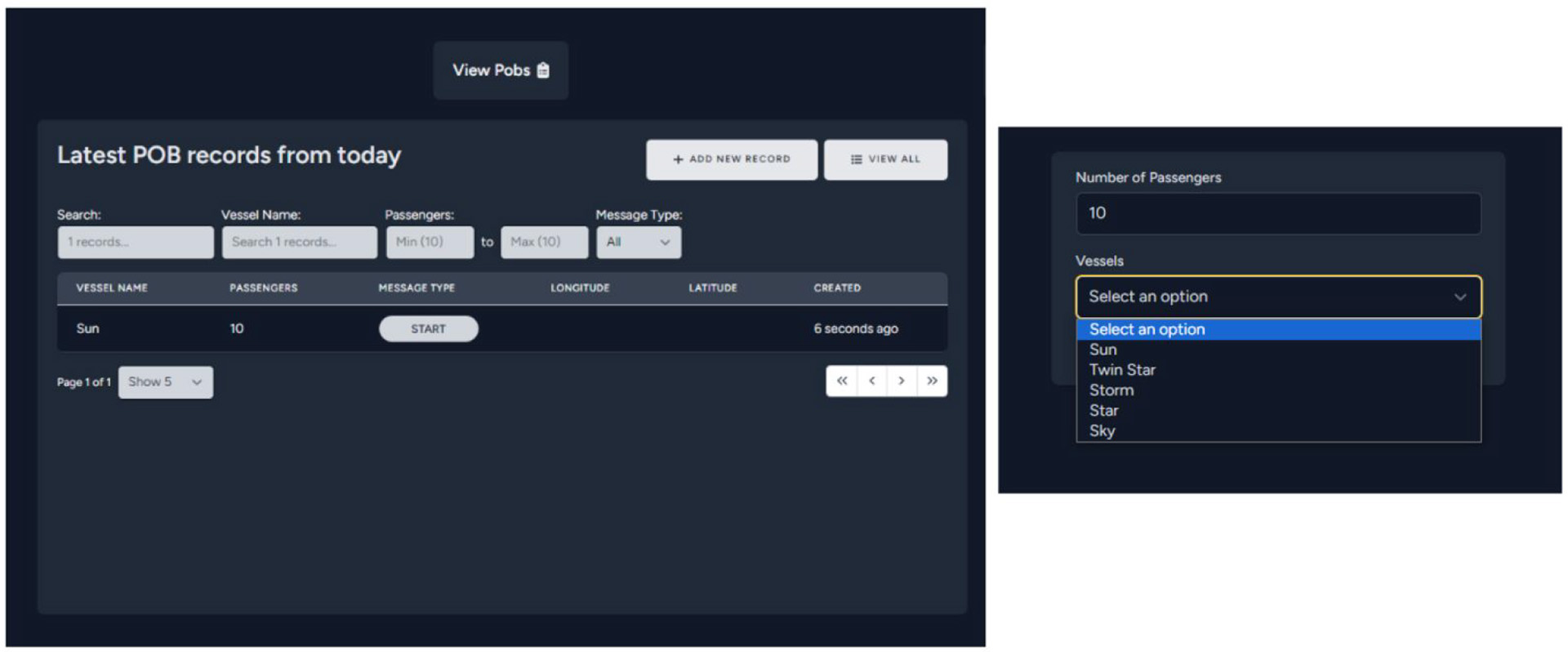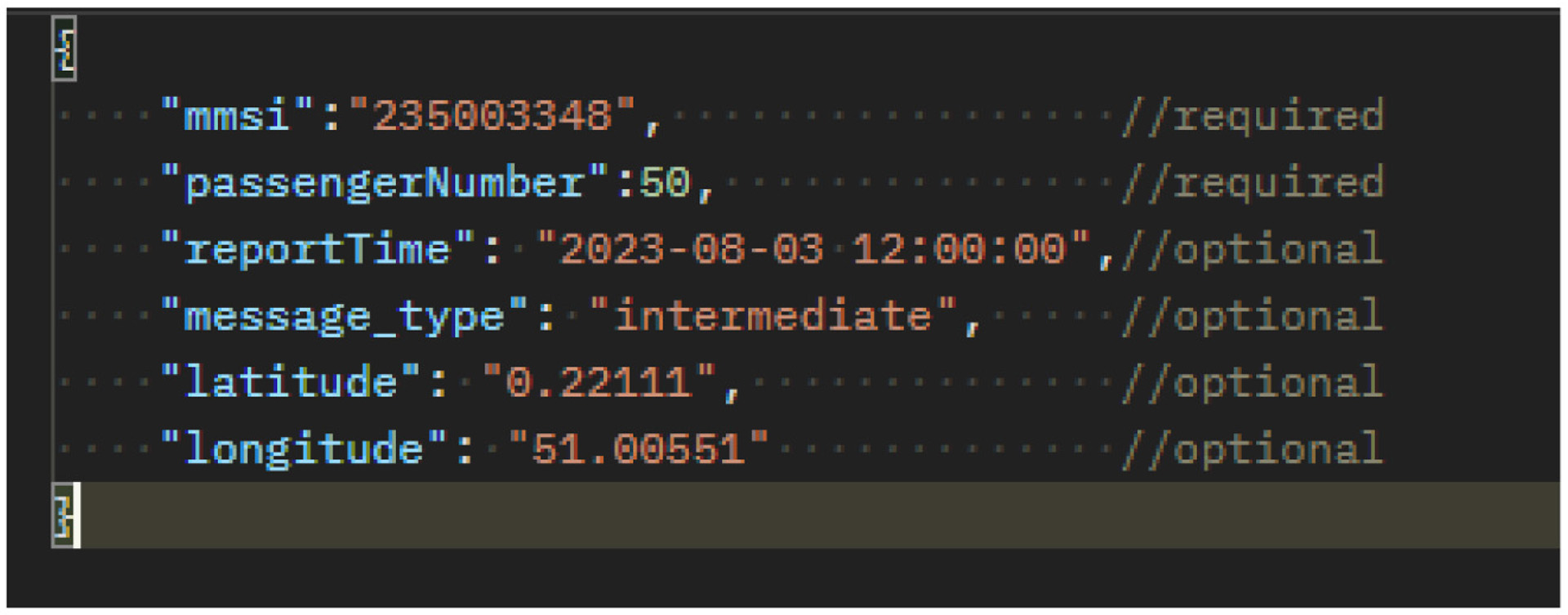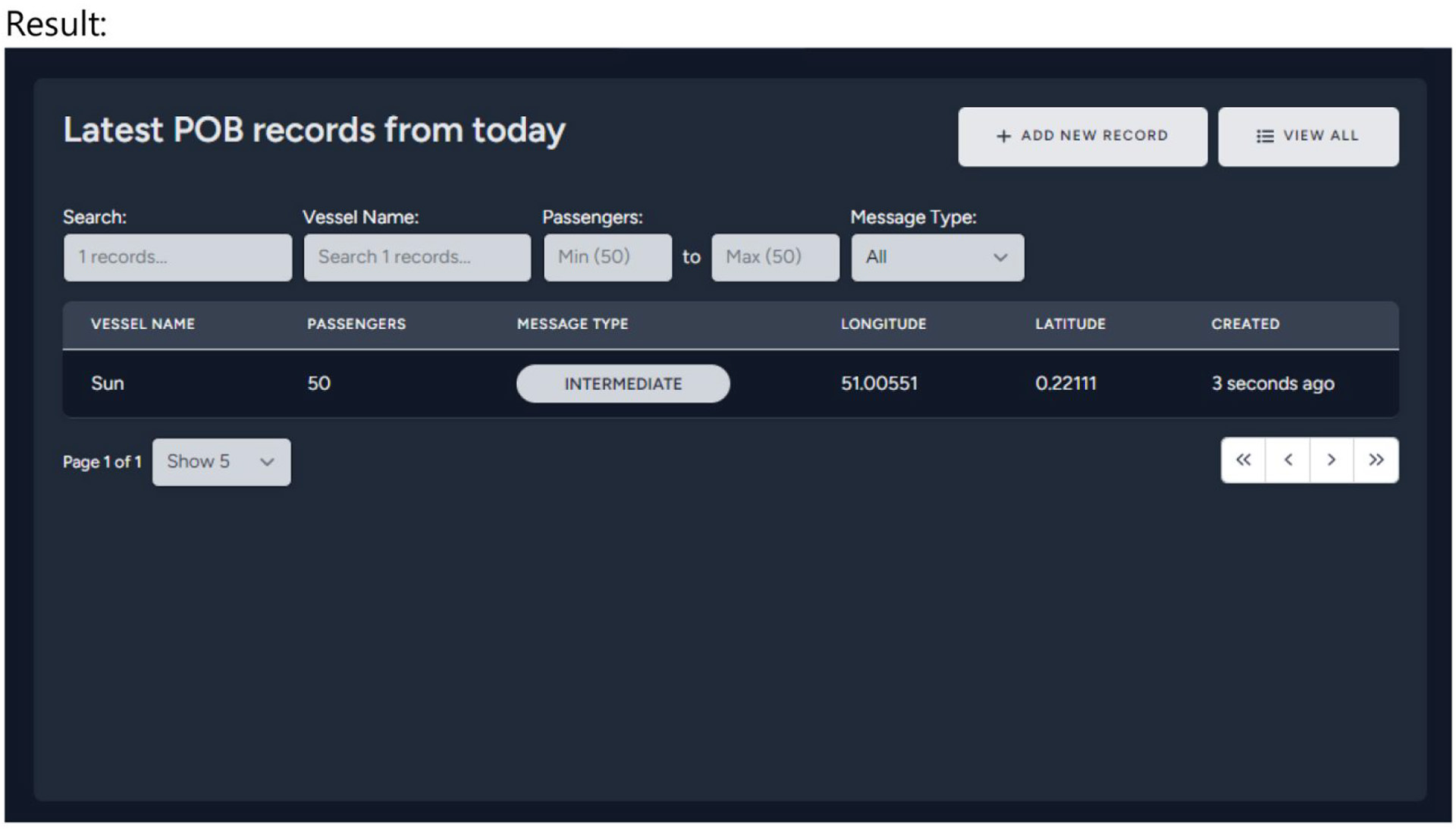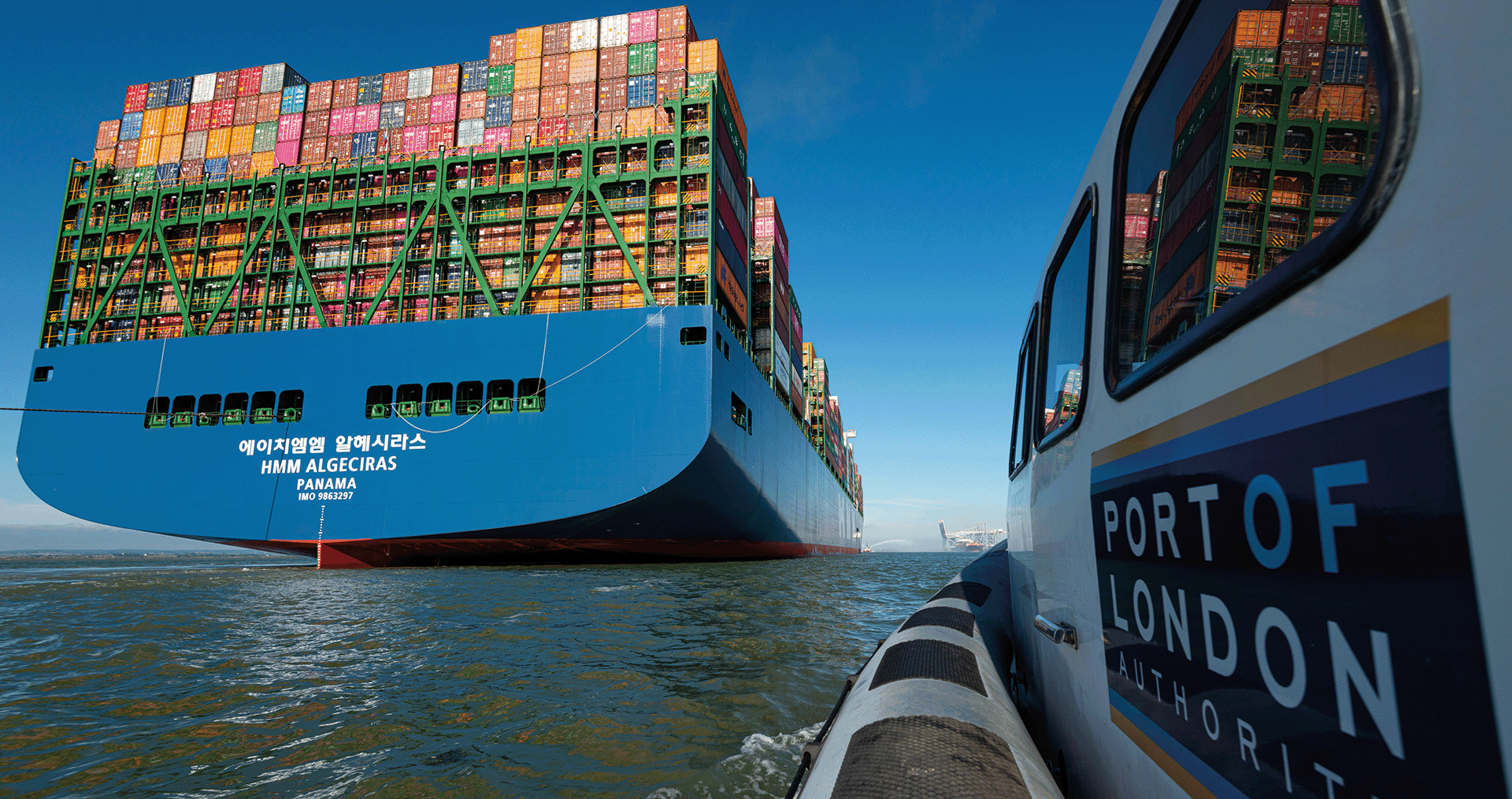Live Tides
NOTICES TO MARINERS
Charts & Surveys

Incident reporting
Life-threatening emergencies on the river:
Call 999 and ask for the Coastguard
For near miss, safety observations and incident reporting click below
River Byelaw 9: Drink or drugs
Thames AIS Technical Requirements Specification serve as an appendix to Thames Bylaw 12 – Thames AIS Carriage Requirements.
Carriage of Thames AIS
The carriage of Thames AIS is mandatory for certain categories of vessel under PLA Byelaw 12, in summary:
The following categories of vessel must carry Thames AIS if they intend to navigate between Denton and Richmond Lock:
- Class IV, V and VI passenger vessels.
The following categories of vessel must carry Thames AIS if they intend to navigate between Margaretness and Richmond Lock:
- Vessels of more than 40m in length overall
- Vessels having a gross tonnage of over 50 tons
- Vessels engaged in towing or pushing operations
- Specified vessels or vessels carrying marine pollutants in bulk
- Vessels holding a Certificate of Compliance under Byelaw 16.3
How will this work for people using the portal?
All vessel operators required to comply with Thames AIS will need to set up an account on the web portal. To do so the following information should be submitted to: [email protected]
- Business Name
- Email domain(s) for users (eg. exampledomain.com)
- A list of vessels including vessel names and MMSI numbers.

Once in the system, you will be able to see your existing submissions and create a new submission by entering the MMSI number of the vessel (the system will remember your commonly used MMSI numbers) and the POB. You will be required to do this before departing any berth on the river.

How can I integrate my system with the API?
We will also accept submissions via a HTTP JSON POST request that contains an API key (to be part of the request headers) issued to your organisation, the MMSI number of the vessel and the number of people on board as follows:

Response: 201 "Record added successfully."

Note: A much more detailed document can be provided for all possible API responses if needed.
What impact will this have on existing equipment?
As stated above, your existing Thames AIS equipment will continue to be compliant with the standard; however, you will no longer be required (or able) to submit POB information via that equipment and instead will use the portal or API.
When are we proposing to do this?
The new system was effective from 4th September 2023. Note that the PLA will stop accepting POB information from Thames AIS transmitters at the same time.
See Appendix A of this document for the requirements, procedures and technical specifications.
Appendix A
Thames AIS Technical Requirements Specifications and Procedures for the Operation of Thames AIS and Persons on Board Reporting System
1.0 Thames AIS consists of:
1.1 A Class Alfa Universal AIS transponder complying with IMO resolution MSC.74 (69) Annex 3 as specified by IEC 61993-2 and ITU-R M.1371-5 and IALA technical clarifications of ITU-R M.1371-5 with the following exceptions:
a) IMO number is only required where it has been allocated. Default setting is zero.
c) Vessel heading and the navigational status are optional. Default setting is “underway using engines”.
and
d) Destination and ETA parameters are not required.
1.2 The AIS Unit must be connected to a Graphical Display Unit that:
a) Provides appropriate situational awareness suitable for navigation and collision avoidance;
b) Is capable of decoding and displaying targets in accordance with ITU-R 1371-5 nominal reporting
interval for given speeds;
c) Is positioned so that it is visible to the person with conduct of navigation;
d) Provides a means to transmit a broadcast emergency alert message (safety related);
e) Provides a means to alert the operator of the system and operational alarms including;
i) Reception of safety related messages; and
ii) Failure of positioning sensor (GPS outage)
f) Displays AIS targets clearly labelled with vessel name and in accordance with IMO guidance on the presentation of navigation-related symbols;
2.0 Persons On Board (POB) Reporting:
2.1
a) All vessels required to comply with Thames AIS must submit POB using the Thames AIS Portal (TAP)
b) POB submissions are made directly via the TAP web portal or via an Application Programming Interface (API)
PROCEDURES FOR THE OPERATION OF THAMES AIS AND PERSONS ON BOARD REPORTING SYSTEM
1. Class IV, V and VI Passenger Vessels complying with THAMES AIS in accordance with Byelaw 12 are required to:
a) Operate Thames AIS and its associated Persons On Board (POB) reporting system at all times when underway within Port Limits;
b) Report POB, which means the total number of crew and passengers, to the PLA via the Thames AIS Portal (TAP)
c) Update this information prior to departing the berth and whenever the number changes.
2. All vessels operating THAMES AIS in accordance with Byelaw 12 are permitted to continue to transmit when alongside for short periods but are to turn off THAMES AIS when unmanned or out of service.
Human factors
After the release of The Deadly Dozen – 12 Significant People Factors in Maritime Safety by the MCA, the Port of London Authority was inspired to begin a media safety campaign to help reduce the number of Human Error incidents in the Port.
Our efforts to improve safety can only be successful with the help from everyone on the river.
We welcome any near miss reports to better inform our effort to improve safety on the river.
HUMAN
Shortcuts are usually done with the best intentions to get the job done – but not always! People may think they are doing it correctly or don't fully understand the risk of their actions.
Make sure you have the time, equipment and training to carry out a task properly and safely.
- Procedures should be clear, easy to follow and developed with the people who will use them.
- If you find a problem with a procedure, report it.
- Don't take shortcuts.
It is impossible to write procedures to cover ALL eventualities. Mariners will always face unpredictable situations.
Be inclusive – encourage everyone to participate in activities and discuss issues with team members. Ensure the WHOLE crew know what's happening.
Bear in mind that not everyone has the same skill and knowledge, so may need the support of others.
Poor situational awareness continues to be a contributory factor in many maritime incidents. Always plan effectively and know what to do before you start a task.
Look out for problems and ask for valued input from your team members. Don't ignore a problem and carry on regardless, speak up!
- Never assume someone else's intentions.
- Don't be afraid to alert management and crew members of potential problems.
It can be useful to establish so called red zones, for example whilst under pilotage or other times of difficult navigation, only allowing essential communications in the red zones. This way, unimportant distractions are less likely to interrupt safety critical tasks.
- Be mindful when people are performing safety critical tasks – time your communication appropriately.
- Checklists can help monitor progress.
- If someone else is being distracted, alert them.
In the world of maritime operations many things can go wrong. Speaking up in a timely manner can help avoid many accidents. This is particularly critical during emergency or high stress situations.
Alerting and assertiveness is not easy for everyone, particularly in the presence of more senior people.
- Don't be afraid to speak up – it can save lives. If someone ignores you, repeat it.
- Don't ignore a problem – it will only get worse. If you are alerted to an issue, acknowledge it and act upon it effectively.
- Never assume – remain alert and speak up if you suspect a problem.
FACTORS
Mental and/or physical impairment can have a seriously adverse effect on performance and the ability to operate safely. Help your colleagues if they are experiencing problems.
Seek medical attention if you feel unwell or are injured or seek help if you have personal problems affecting your fitness for duty.
Don't
- Consume alcohol before or during work periods.
- Report for duty if under the influence of alcohol.
- Take illegal drugs.
- Try to hide the effect of degraded fitness for duty.
Competence is about more than holding an appropriate training certificate.
Don't put people in roles beyond their competence and experience, or assume people's level of competence. Equally don't claim you can do more than you really can.
If you are unsure about something, ask and help each other.
Repeat messages to each other to confirm understanding, whether it's on the VHF or face to face. It's also helpful to repeat important parts of a message.
Words make up only 30% of communication. Tone, body language and gestures make up the rest.
- Make sure your intentions are clear to other vessels.
- Never assume – remain alert and speak up if you suspect a problem.
- Ensure the WHOLE crew know what's happening.
- Colloquialisms and slang may not be understood by all.
- Be aware that people tend to speak faster, louder and with less clear pronunciation in times of stress or emergency.
Pressure can be motivating, exciting and give a sense of achievement. However, too much pressure can threaten safety.
Be alert to workload pressures and ask for help if you are overloaded. Don't struggle on regardless or take unnecessary short cuts to catch up.
Ensure you can complete a task in a safe and timely manner before beginning – if not, ask for help.
Don't accept being tired as a way of life – look out for the effects of fatigue and speak up if you're feeling tired. Marine Guidance Note 505 has a lot of advice and tips on this subject.
Manage fatigue by eating well, coming to work well-rested and by working as a team – working alone might make you less alert and feel more tired.
20% of Inland Waterway incidents occur late afternoon between 16:00 and 18:00 – an incident is 2.5 times more likely during these hours than any other – are you still alert at the end of your shift?
It's all too easy to be complacent. Be alert to what could go wrong – good teamwork, communication and a proactive safety culture helps to recognise when a situation changes.
Being fatigued can worsen complacency.
Having a good safety culture means that we all look out for each other. Don't ignore other people's unsafe behaviour and don't believe safety is someone else's problem – take responsibility.
Over 42% of navigational incidents on the Thames in the last 2 years have been labelled as Human Error – were these the result of a bad safety culture?
- Don't assume everything is OK all the time.
- Just because it's the way you've always done it, doesn't mean it's the best way.
- Always report near misses – they're a warning. Next time it might not be a miss.
Breakdowns
Over the two years 2016/2017, 120 breakdowns were reported in central London.
Breakdowns can cause damage to vessels and piers, put crew and passengers at risk, increase congestion and result in a substantial maintenance bill for the boat owners.
We looked to find out more about the causes of the incidents and found some interesting statistics:
- 40% of the breakdowns are caused by debris in the water – mainly ropes
- 18% are caused by electrical faults (wiring and switch faults)
- 10% by overheating (largely failed water pumps); and
- 8% by fuel problems (for example blocked filters and contamination).
So we’re calling on everyone taking their boats on the Thames to step up vigilance and avoid the ‘side effects’ of neglect, in a bid radically to reduce the number of breakdowns on the river.
Our messages of ‘bin it’, ‘check it’, ‘cool it’, and ‘clean it’ are summed up in these short, simple safety films -->
Explore the Thames Vision 2050
The Thames Vision is built around three interconnected themes, centred on the role the river plays for people and the environment.
The No. 1 Net Zero UK commercial hub
The country’s largest and most competitive port, closest to the UK’s biggest market, producing Net Zero emissions. Improved connectivity to road and rail infrastructure. Technologically innovative, expanding the transportation of light freight into central London as urban logistics transform.
A place to live, visit, play and enjoy

Accessible to all, a national and international icon for the city and the country. More visitors, drawn to the river as the best way to enjoy London and the Thames Estuary, and its many cultural attractions. More people from diverse backgrounds enjoying sport and leisure opportunities on the Thames.
Clear air, water and land

A clean river, free of sewage, waste and other pollution, supporting greater biodiversity and recreational use. Valued for its clean air, natural flood defence, wildlife and as a carbon sink.
Explore the Thames Vision 2050
The Thames Vision is built around three interconnected themes, centred on the role the river plays for people and the environment.
The No. 1 Net Zero UK commercial hub
The country’s largest and most competitive port, closest to the UK’s biggest market, producing Net Zero emissions. Improved connectivity to road and rail infrastructure. Technologically innovative, expanding the transportation of light freight into central London as urban logistics transform.
A place to live, visit, play and enjoy

Accessible to all, a national and international icon for the city and the country. More visitors, drawn to the river as the best way to enjoy London and the Thames Estuary, and its many cultural attractions. More people from diverse backgrounds enjoying sport and leisure opportunities on the Thames.
Clear air, water and land

A clean river, free of sewage, waste and other pollution, supporting greater biodiversity and recreational use. Valued for its clean air, natural flood defence, wildlife and as a carbon sink.
Explore the Thames Vision 2050
The Thames Vision is built around three interconnected themes, centred on the role the river plays for people and the environment.
The No. 1 Net Zero UK commercial hub
The country’s largest and most competitive port, closest to the UK’s biggest market, producing Net Zero emissions. Improved connectivity to road and rail infrastructure. Technologically innovative, expanding the transportation of light freight into central London as urban logistics transform.
A place to live, visit, play and enjoy

Accessible to all, a national and international icon for the city and the country. More visitors, drawn to the river as the best way to enjoy London and the Thames Estuary, and its many cultural attractions. More people from diverse backgrounds enjoying sport and leisure opportunities on the Thames.
Clear air, water and land

A clean river, free of sewage, waste and other pollution, supporting greater biodiversity and recreational use. Valued for its clean air, natural flood defence, wildlife and as a carbon sink.
Explore the Thames Vision 2050
The Thames Vision is built around three interconnected themes, centred on the role the river plays for people and the environment.
The No. 1 Net Zero UK commercial hub
The country’s largest and most competitive port, closest to the UK’s biggest market, producing Net Zero emissions. Improved connectivity to road and rail infrastructure. Technologically innovative, expanding the transportation of light freight into central London as urban logistics transform.
A place to live, visit, play and enjoy

Accessible to all, a national and international icon for the city and the country. More visitors, drawn to the river as the best way to enjoy London and the Thames Estuary, and its many cultural attractions. More people from diverse backgrounds enjoying sport and leisure opportunities on the Thames.
Clear air, water and land

A clean river, free of sewage, waste and other pollution, supporting greater biodiversity and recreational use. Valued for its clean air, natural flood defence, wildlife and as a carbon sink.
Explore the Thames Vision 2050
The Thames Vision is built around three interconnected themes, centred on the role the river plays for people and the environment.
The No. 1 Net Zero UK commercial hub
The country’s largest and most competitive port, closest to the UK’s biggest market, producing Net Zero emissions. Improved connectivity to road and rail infrastructure. Technologically innovative, expanding the transportation of light freight into central London as urban logistics transform.
A place to live, visit, play and enjoy

Accessible to all, a national and international icon for the city and the country. More visitors, drawn to the river as the best way to enjoy London and the Thames Estuary, and its many cultural attractions. More people from diverse backgrounds enjoying sport and leisure opportunities on the Thames.
Clear air, water and land

A clean river, free of sewage, waste and other pollution, supporting greater biodiversity and recreational use. Valued for its clean air, natural flood defence, wildlife and as a carbon sink.
Discover





